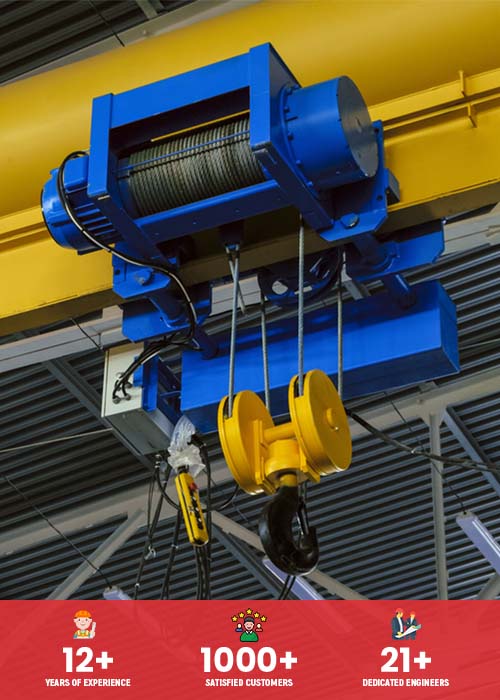Short guide to Jib Cranes
There is much different type of cranes available each having a different application. The decision on which one to use needs to be based on the current requirements in terms of weight to be lifted and the space available to operate the crane. Just about all the engineering project will utilize a crane. With the Jib Crane, a rotating boom is attached to the vertical mast and hoist that is operated electrically. However there is also the option to operate it pneumatically. The Jib crane consists of pillars that are usually fixed to a wall. Although this can also be attached to the floor.
Types of JIB Cranes

Free standing
- The free standing crane has several sub types.
- It is available as a Base Plate Mounted, Sleeve Insert Mounted and Insert Mount.
- All three types use a similar mast pipe, head assembly and I-beam bottom.
- The mounting arrangement is unique and different.
- The main feature being the 360 degrees of continuous rotation.
- With the base plate mounted one the Mast is simply bolted to the foundation and thus it can easily be shifted if required in the future.
- Additionally the base plate mounted one has a hexagonal plate welded to the base of the mast pipe. It is also secured with bolts to reinforce the structure.
Wall Bracket
- The Wall Bracket one is different and also has several applications.
- This combines a great many features into one package, like simple design, heavy duty construction, easy to install and of low cost too.
- The quality of this crane is very good and to rotation process is very simple.
- It consists of a standard i-Beam for the boom, a tie rod (right-hand-threaded at each end), a top and a bottom bracket, a beam bracket and trolley stops.
Applications
- The JIB crane is useful in the bay area.
- On the walls of a shop.
- As a supplement to an overhead travelling crane or monorail
Selecting a JIB Crane
- To start with it is important to access your own needs and requirements and then consider the following:
- Type and extent of structural support
- Power requirements for operation of hoist or crane.
- The design and characteristics of the crane.
- The weight and height under the boom
- The cost should also be considered to some extent.
- Besides which there are two types of JIB cranes the Wall mounted one and the Freestanding one.
Wall Mounted JIB Crane: The wall mounted does not require any floor space or any foundation either. It folds out of the way and allows for big clearance space above and below the boom. This offers about 200 degree rotation.
Freestanding JIB Crane: The Freestanding crane has a higher capacity and also a longer span. It also has a foundation though can be installed just about at any place. The area of rotation on the freestanding and the mast style JIB cranes is like 360 degrees.
KRISHNA JIB Cranes can meet your needs
Krishna Crane Engineers provides JIB cranes that are off good quality and reliable. Their articulating JIB cranes have booms with two sets of axes which enables them to reach places which are obstructed with several obstacles. The cranes are easy to fold out of the way in order to make space for the larger overhead ones.
Hence there are several benefits of selecting our cranes. You can maximize space utilization since the wall mounted one does not require any ground space. The capacity of our cranes is from 0.5 Ton to 5 ton.


